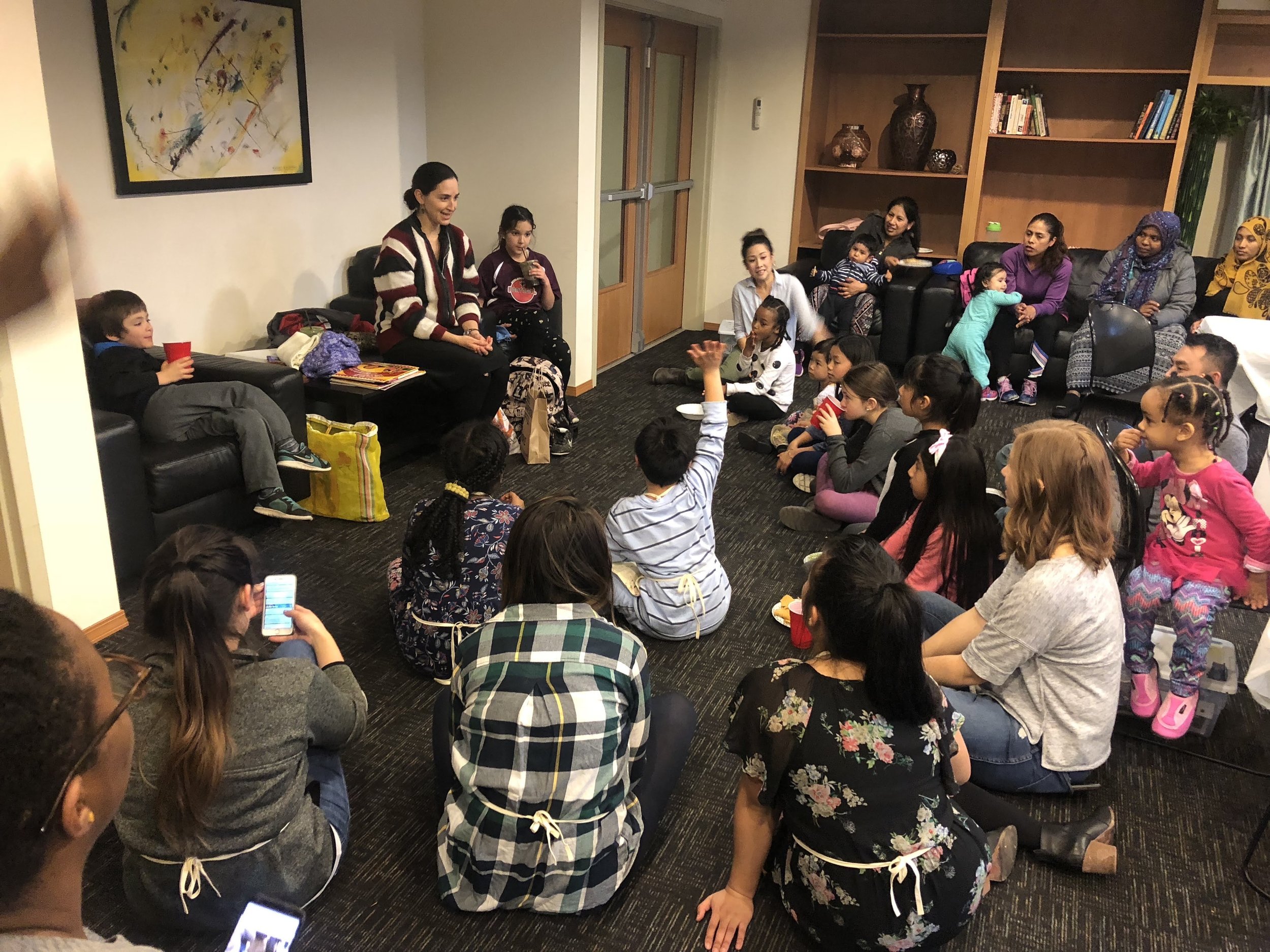Tales of Art (TOA) is a free art class I created for children that centers around heritage and cultural awareness. Guest readers come in and read stories to the children while volunteers guide the children’s artwork to represent the stories they just heard. TOA seeks to provide a place for youth to share their culture and life experience through artistic expressions with the hope of increasing intra-cultural awareness and appreciation.
I created the full branding, programing, and marketing for Tales of Art.
The TOA book captured the different folktale story art
-
How did it start?
In 2017, there was increased racial tension in Seattle, specifically in and around the international districts. Many times racial tension results from lack of engagement and connection between different cultures.
In April 2017, I received a $20,000 grant from the Neighborhood Matching Fund of Seattle to start Tales of Art (TOA).
-
How can TOA benefit the community?
TOA art classes will introduce and connect youth from low income areas and from ethnic backgrounds to art education for often time, these youth have limited opportunity and access to art programs. Art classes are centered around cultural storytelling and sharing. The classmates would not only be able to share their cultural experiences but also learn about others’ cultural experiences as well.
-
What's unique about us?
Many of the artists and volunteers of TOA are people of color. This is a powerful mentorship opportunity for youth from low income areas and ethnic background to see artists and designers that reflect their own image and experiences.
TOA uses creativity to empower and connect with others. I consistently had 8-10 volunteers every week that come. They help and interact with the children while sometimes also doing the same art project along side them!
How the classes worked
Overview
I wanted this art program to be a collaborative effort for all volunteers. I would ask for a volunteer to find a folklore story from any country and come up with an art project for it. They would select a week they want to read the story and lead the children in the art project. The volunteer would be responsible for bringing the supplies and presentation material they need for storytelling (I would reimburse them).
Class structure
These are 1.5 hour long classes—why? Because children lose their attention span really quickly we learned. A lot of this time is spent prepping for the class and cleaning up afterwards (something we made each child do every week).
Volunteers come 15-30mins early to set up snack tables and prep the art materials.
The first 5-10 minutes the children come in and they can eat the snacks provided at each class while the presenter sets up the monitor to show visuals.
With snacks in hand, the children gather around on the floor (or couch) to listen to the 10-15 mins folklore reading by the volunteer.
After the reading and snacks are done, the children grab their art bin and finds a seat (each child gets their own art bin full of supplies that they leave in the room, but can keep at the end of the program). The volunteer then explains the art project and shows an example that they’ve made ahead of time.
The children spend the next hour working on the art project as the volunteers go around and help them wherever they need. Meanwhile, kids-bop is playing in the background.
The last 10 mins is spent wrapping up and putting away supplies. We made the children clean with us and they were more than happy to.
When all the children leave, I have a quick round-the-room chat with the volunteers; what went well, what didn’t, what should we do or not do next time, etc., who wants to volunteer for next week? Sometimes we have guest speakers come and read for us.
One time, Rebecca Saldana came and read a Mexican folklore to the children—what a treat!








